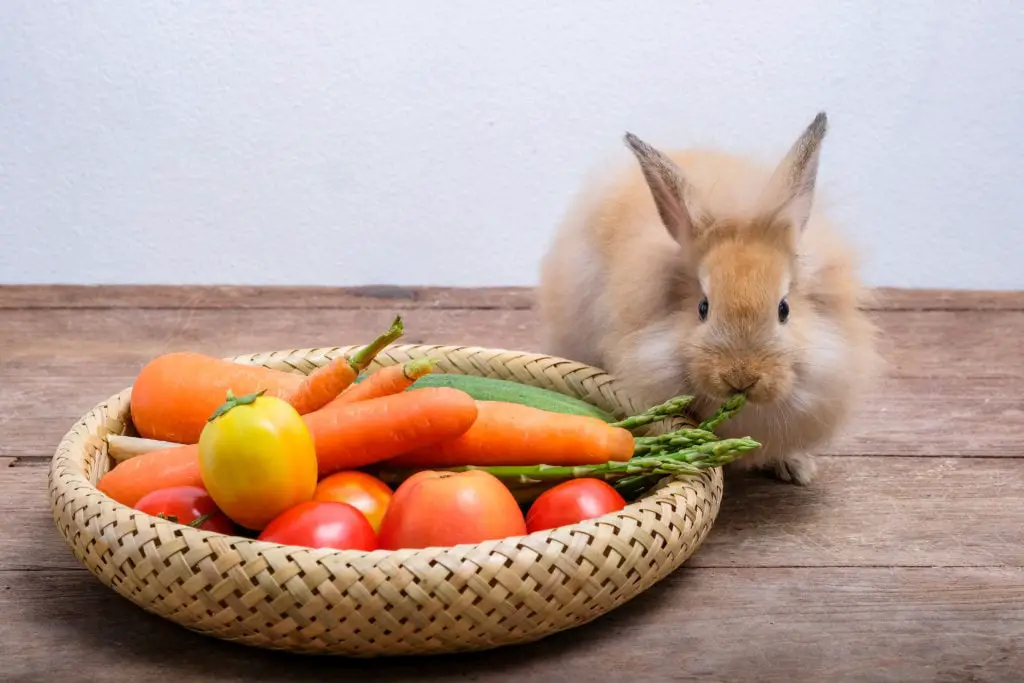
When your rabbit is underweight, it may be alarming. Your rabbit may need to gain some weight to be healthy and happy.
To gain weight, your rabbit must consume more fiber-laden foods. Also, provide your rabbit leafy greens, oats, and opportunities for exercise. Be sure to check with a veterinarian the type of diet and nutrition plan that your rabbit needs to be healthy.
Below, we’ll give you 10 easy steps to help your rabbit gain weight!
Step 1: Visit a Veterinarian
Before you start fattening up your rabbit, you will need to take them to a veterinarian. There is a reason that your rabbit is thin instead of its usually weight. Your rabbit may be losing weight due to parasites, malnourishment in their early years, or a decrease in appetite. Most often it is because of a decrease in appetite, thus a decrease in calories.
You need to determine, with the help of a rabbit expert, why your rabbit is underweight before taking action to help them gain weight. Increasing your rabbit’s calorie intake is not the only thing needed to help your rabbit to become healthy.
Typically, a decrease in appetite happens because of a disease, whether it’s a dental, gastrointestinal, metabolic, cardiovascular, musculoskeletal diseases, or cancer. These diseases will involve a lot of pain that can cause your rabbit to either have pain when eating or they may not be able to smell the food given to them.
Another way your rabbit’s appetite may have decreased is stress. Rabbits are highly sensitive to stress and will have a hard time feeling comfortable enough to eat if they are stressed.
Step 2: Reduce Stress
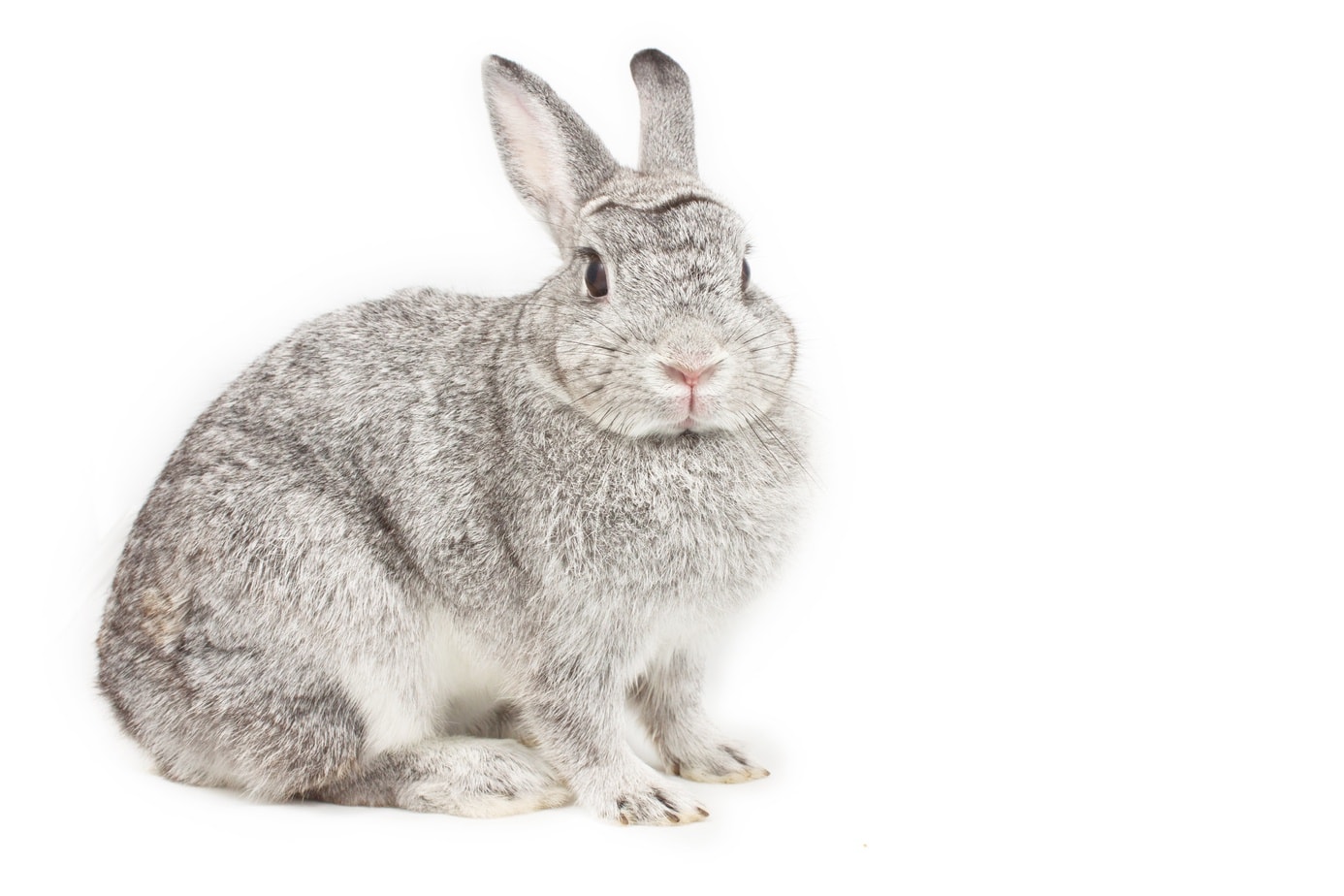
Once you have visited the vet and determined why your rabbit is underweight, you will need to help your rabbit gain weight according to directions from your vet. Though we highly recommend following the direction and diet given to you by your vet, here are some additional steps to help your rabbit gain weight:
Your rabbit may be inflicted with a disease or they may just be malnourished. Either way, you will want to reduce the stress-induced things in your rabbit’s environment. Stressful situations will not encourage your rabbit to eat.
Remove any children or pets from your rabbit’s environment and consider placing their cage in another room. Refrain from handling your rabbit until they are calm and comfortable. Reduce the risk of loud noises, such as a dog barking or doors slamming.
Step 3: Take It Slow
Any new changes in a rabbit’s daily life may cause stress. When changing your rabbit’s diet, take it slow. You don’t want to introduce a ton of new foods to their diet as they may not eat any of the new foods that you give them.
When introducing new, fiber-rich, and high-protein foods, slowly introduce them to your rabbit’s food bowl. Only give them a little bit of the new foods at a time. And if your rabbit refuses to eat the new veggies or hay you give them, try something else. Don’t give up! Something is sure to catch their eye or their nose.
Remember that rabbits are very sensitive. If they are introduced to a lot of change all at once, they will become stressed and overwhelmed. Be cautious and caring when helping your rabbit to become healthy.
Step 4: Pick Higher Calorie Foods
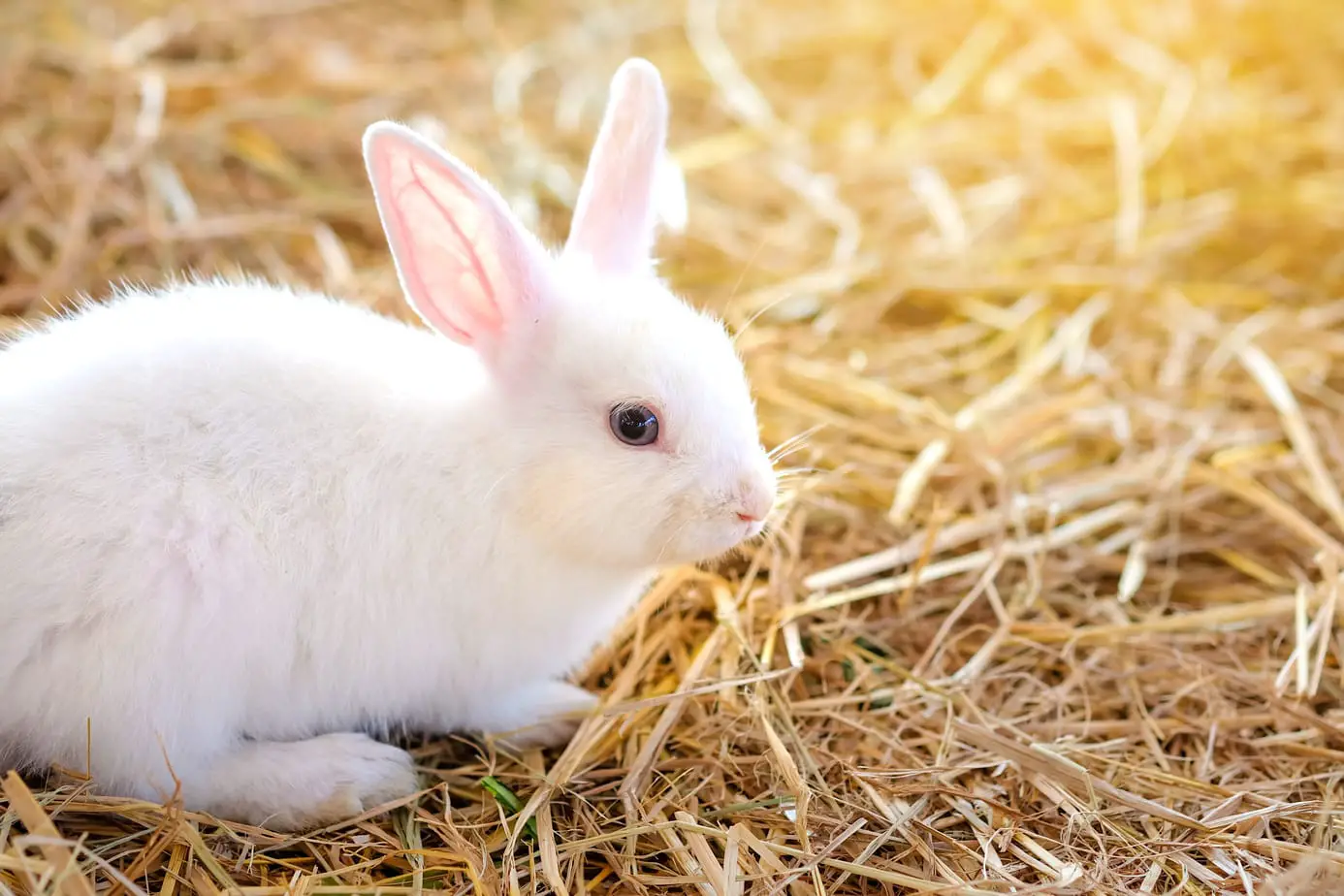
To help your rabbit gain weight, you’ll need to increase the amount of calories that they ingest. The easiest way to do this is to pick high-calorie foods or high-calorie varieties of foods that they are already eating.
Hay
Instead of feeding your rabbit golden hay, consider feeding them green hay. Green, leafy hay has a higher protein and fat value compared to golden hay. Readigrass is a great option because of the higher nutritional value compared to traditional hay. Alfalfa is also a great option. However, if your rabbit’s weight loss is due to bladder issues, the increased calcium in Alfalfa will be bad for your rabbit.
Usually, an increased source of fiber foods will help your rabbit back to their healthy weight.
Additional hay options include oat hay (high in fiber), and orchard grass hay (high in protein, fiber, and calories). To learn more about various types of hay and which one is best for your rabbit, take a look at my article all about feeding your pet rabbit hay here.
Step 4: Leafy Greens
Leafy greens are a wonderful option for your underweight rabbit. Typically, a rabbit’s diet should mainly consist of fiber-rich hay. Leafy greens should not replace your rabbit’s main diet of hay, only support it.
Here is a list of leafy greens that are safe for rabbits:
- Kale
- Cilantro
- Parsley
- Spinach
- Romaine Lettuce
- Basil
- Cabbage
Notice that iceberg lettuce is not on this list. Iceberg lettuce is not very nutritional for rabbits because its main component is water. Do not feed your rabbit iceberg lettuce.
TIP: You can learn more about what types of lettuce are good for your rabbit and how it compares to feeding hay and other options in my article Can a Rabbit Eat Too Much Lettuce? Here’s the Truth.
Step 5: Increase Amount of Dry Food
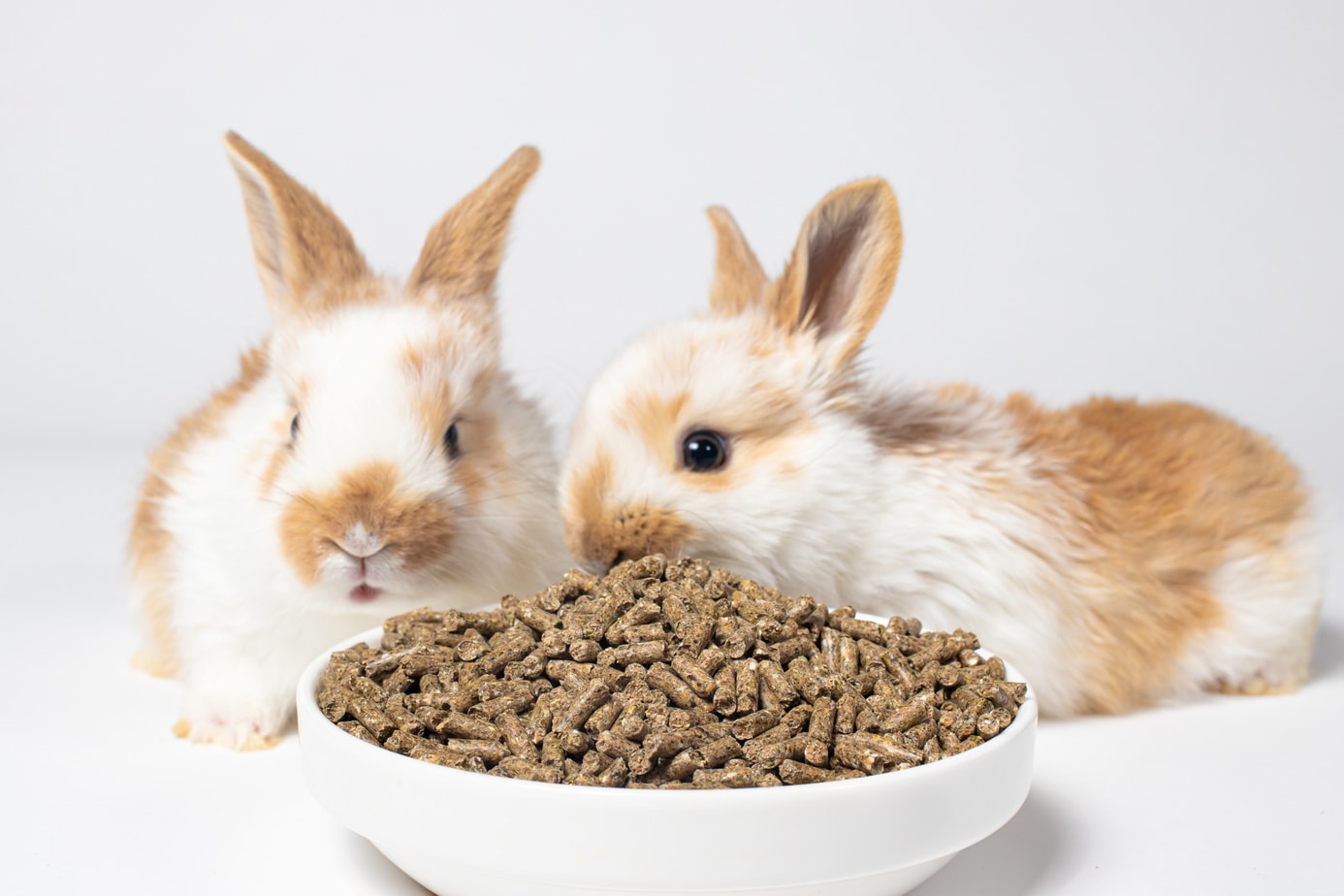
Rabbits love dry food, particularly pellets! It is not usually recommended that you feed your rabbit pellets regularly due to an increased risk of obesity. However, if your rabbit needs to gain weight, then you may consider introducing pellets into its diet. Increasing their consumption of pellets is a great way to increase your rabbit’s calorie intake.
Consider feeding your rabbit pellets directed for young or breeding rabbits. These types of pellets are made to be higher in fiber and protein. So, if your rabbit does not eat the extra food, you can give them the pellets that are higher in fiber and protein without increasing the amount too much. If you do, they will still get the increased nourishment from the pellets
Step 6: Several Food Bowls
If your rabbit has several other rabbit friends around, they may not be getting access to the food bowl. Occasionally, a rabbit will guard the food bowl, preventing other rabbits from eating. If this is the case, place other food bowls around the room or enclosure where your rabbits are kept.
However, if you don’t have more than one rabbit, this is still a great step! Multiple food bowls will give your rabbit options! They can decide which food they want to eat while you get to offer them more food. Hopefully, with more food options, your rabbit will consume more calories, thus gaining weight.
Step 7: Oats
Oats are a great option for rabbits! They will certainly help your rabbit put on weight and are generally considered pretty tasty by rabbits! Your rabbit’s digestive system should be able to handle the oats, but like Step 2 said, take it slow, start small. You don’t want to feed your rabbit something that may stress them out or cause digestive problems.
When selecting which oats to feed your rabbit, get the rolled oats or porridge oats. Your rabbit should only need about a tablespoon a day.
Step 8: Sweet Treats
If your rabbit still refuses to eat any of the new food, consider giving them a treat of fruit or veggies to stimulate their appetite. Such foods like apple, carrot, sweet pepper or parsnips have more energy and calories stored in them than leafy greens.
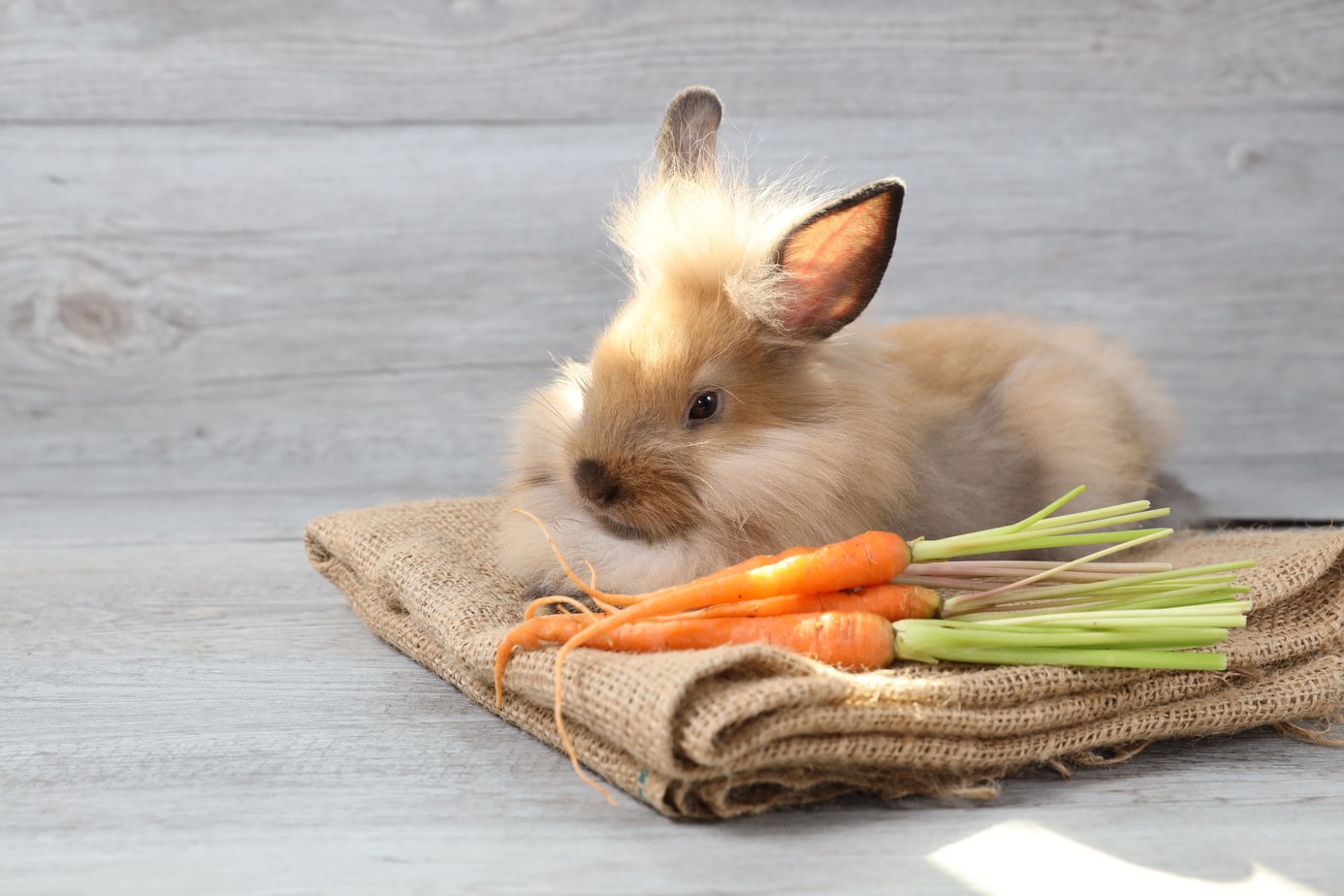
Unfortunately, this is not the most efficient way to increase your rabbit’s weight, but if your rabbit is having difficulty eating, giving them a tasty treat may encourage them to eat. Again, these foods are not supposed to replace your rabbit’s diet of hay. Only to supplement it.
Step 9: Exercise
Though it sounds a little backward, your rabbit may need to be more active to gain weight. If your rabbit has not been getting enough exercise because they are laying around, not moving much, lethargic, have pain when moving, or don’t have much time outside of their cage, they can lose muscle just as much as weight.
Let your rabbit out of their cage more often. Encourage them to move around and play. Consider placing the extra food bowls from Step 6 around the room or your rabbit’s environment. This will hopefully encourage your rabbit to hop around to all the different food sources. They will not only be getting exercise and boosting their muscles, but they will be eating more than what is in their regular food bowl.
Step 10: Watch Their Weight
Above all, it is important to remember that while a healthy rabbit is a happy rabbit, there is moderation in all things. Be careful not to get too overzealous when increasing your rabbit’s weight; you don’t want the weight to become unhealthy and dangerous.
The average rabbit is 5–8 lbs., but that can also depend on your breed of rabbit. You can easily check how big your specific breed of rabbit should get on this pet rabbit growth chart. It may also be a good idea to ask your veterinarian on the next visit what the healthy weight of your rabbit should be. You do not want your rabbit to be overweight.
Make sure that in this process of putting on weight, that your rabbit does not gain too much weight, as that could also be unhealthy. Monitor your rabbit’s weight and check them frequently. An increase in weight will increase the threat of other health problems.
Now that you know how to help your rabbit gain weight, be careful and take it slow! You don’t want to unnecessarily stress your rabbit with new changes, but you also want to make sure that they are healthy.
And remember, a healthy rabbit is a happy rabbit! Bon appetit!
